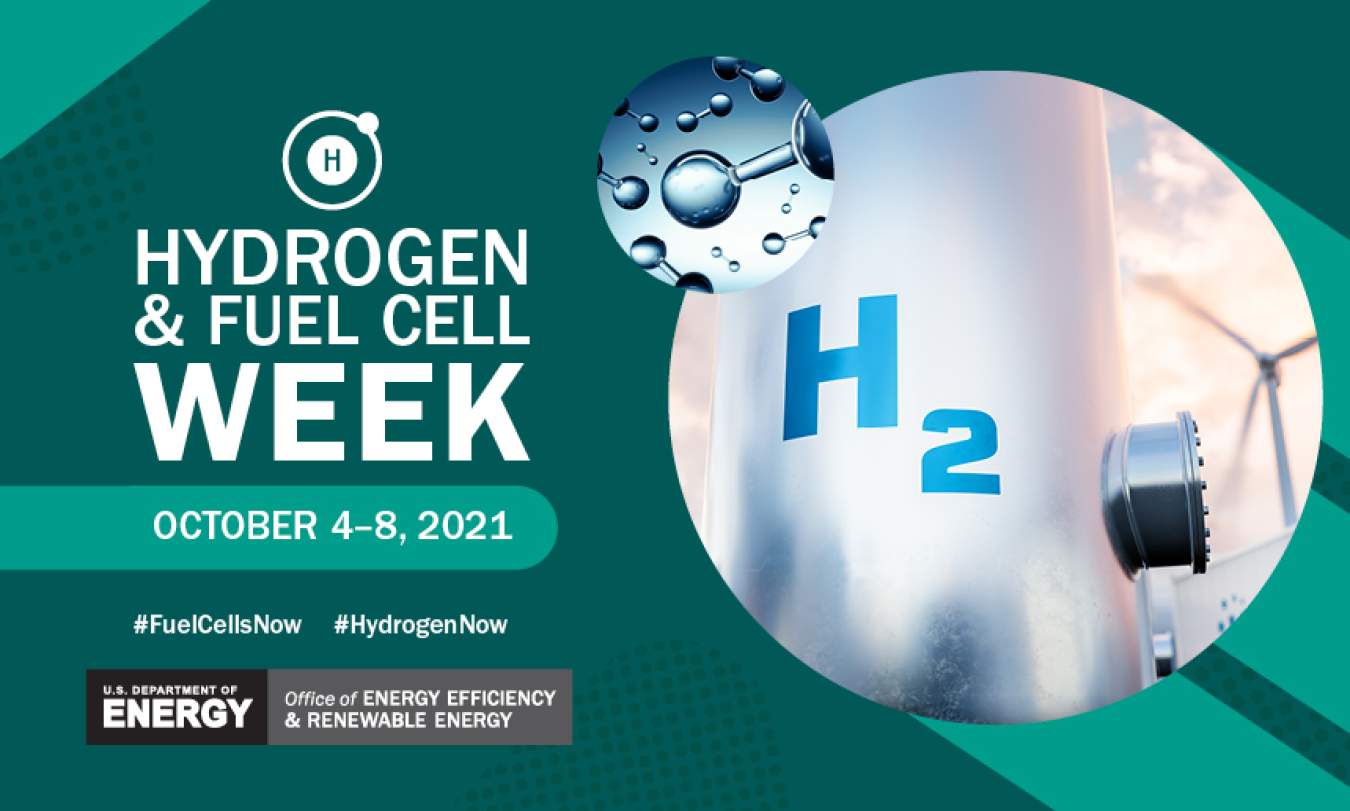
What do hydrogen's atomic weight and October 8 have in common? Both share numerical digits—1.008 for the atomic weight of element number one in the periodic table, and 10/08 for the date. This is why October 8, chosen as Hydrogen and Fuel Cell Day, marks a symbolic opportunity every year to celebrate hydrogen and to talk about the role it can play as we transition to a cleaner and more equitable energy future.
Hydrogen touches many aspects of our everyday lives. It is a clean way to store energy that can help provide electricity to keep the lights on in our homes and businesses, and to fuel zero-emission trucks and other heavy-duty vehicles. We can make hydrogen from water using our nation's abundant energy resources such as wind, solar, and nuclear, or from natural gas with carbon capture to avoid emissions. Hydrogen is also an input to many industrial processes, including making steel, processing food, and an ingredient in fertilizers and even cosmetics. We already produce nearly 10 million metric tons of hydrogen annually in the United States, and the number of hydrogen technologies being used in real-world applications continues to increase. Some of these applications include over 170 megawatts of capacity for electrolyzers, which break up water molecules to produce hydrogen. Today, more than 45,000 hydrogen-powered forklifts help move goods in warehouses and supermarkets, and thousands of fuel cell backup power units, which may use hydrogen, can provide electricity during blackouts. While hydrogen technologies have come a long way over the last several years, cost remains one of the main barriers for clean hydrogen to play a larger role in the energy system.
The U.S. Department of Energy (DOE) Hydrogen and Fuel Cell Technologies Office coordinates hydrogen activities across DOE and is working to bridge the gaps in technology to unlock the potential for clean hydrogen to tackle hard-to-decarbonize sectors in our economy, create job opportunities, lift up communities, and help us meet President Biden's climate goals. Through the DOE Hydrogen Shot, we are working across DOE offices and the national laboratories, and also engaging with stakeholders across the country, to achieve 80% reduction in the cost of clean hydrogen within this decade. To achieve this goal, projects and their benefits must be equitably distributed, as diversity, equity, and inclusion are paramount for all Americans to transition to clean energy.
As we kick off this weeklong celebration of Hydrogen and Fuel Cell Day, we hope you'll join us by helping others learn more about clean hydrogen and by fostering a transparent discussion about the challenges in front of us and how we can work together to address them. Here are a few examples of how you can participate throughout the week and on October 8:
- Follow EERE on Facebook, Twitter, and LinkedIn and share something new about hydrogen you've learned tagging #NationalHydrogenDay #FuelCellsNow and #HydrogenNow in your post.
- Walk or run 1.008 miles and share a photo on social media tagging #H2DayWalk and #H2DayRun.
- Test your H2IQ by taking the hydrogen and fuel cell quiz and challenge your friends to do it as well.
- Mark your calendar on October 8 at 12:30 p.m. ET for an H2IQ Hour webinar highlighting an exciting announcement!
- Learn about the types of jobs you can find in hydrogen and fuel cells by using the career map.
- Read about DOE's H2@Scale vision, including how many of our nation's abundant energy resources including wind and nuclear power can be used to produce clean hydrogen.

